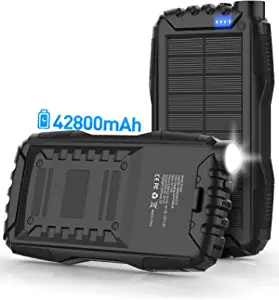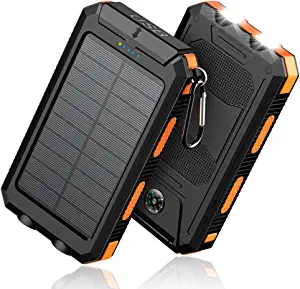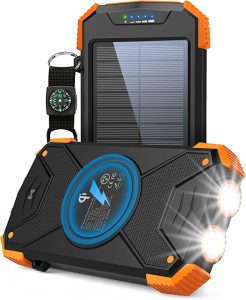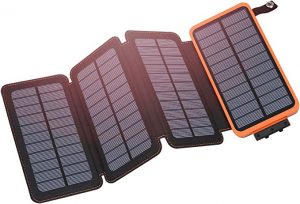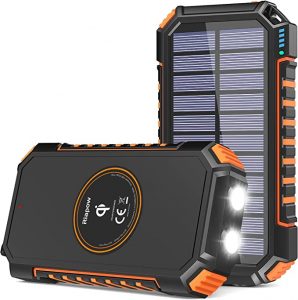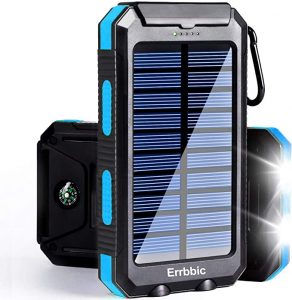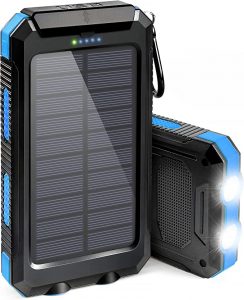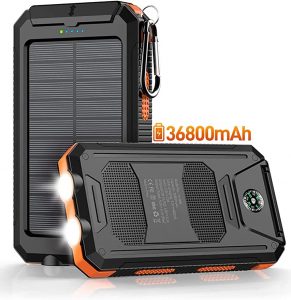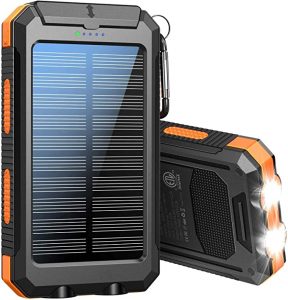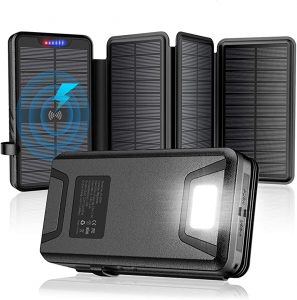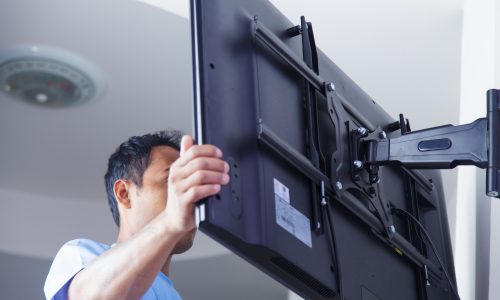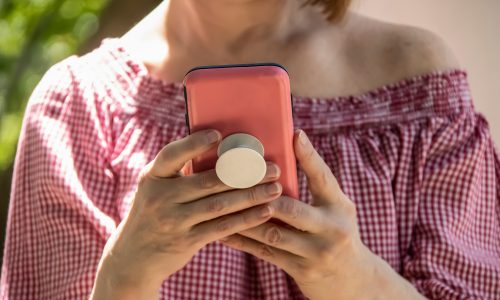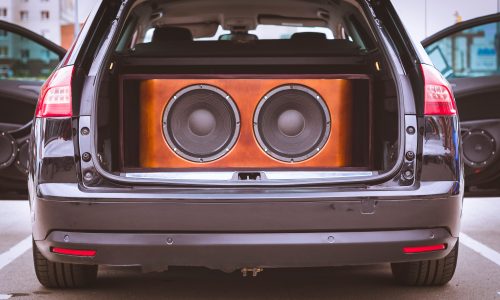The Best Solar Power Bank
We looked at the top 10 Solar Power Banks and dug through the reviews from 25 of the most popular review sites including and more. The result is a ranking of the best Solar Power Banks.
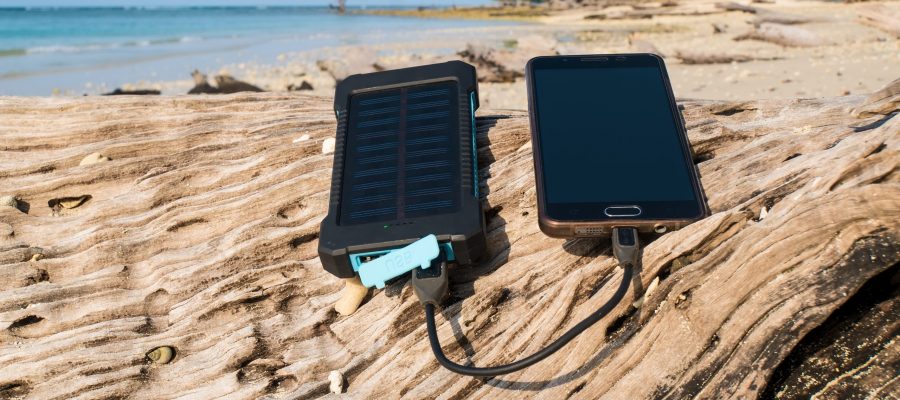
Our Review Process
Don't Waste Your Money is focused on helping you make the best purchasing decision. Our team of experts spends hundreds of hours analyzing, testing, and researching products so you don't have to. Learn more.
Our Picks For The Top Solar Power Banks
- 1. Mregb Portable Fast Charging Built-in Bright Flashlight Solar Power Bank
- 2. Feeke Dual USB Port Built-in Led Flashlight Solar Power Bank
- 3. BLAVOR Type C Input Output Built-in Flashlight Solar Power Bank
- 4. Hiluckey Fast Charging USB C Portable Solar Power Bank
- 5. Riapow Wireless Fast Charge Built-in Flashlight PhoneSolar Power Bank
- 6. ERRBBIC Waterproof Built-in Dual LED Flashlights & Compass Solar Power Bank
- 7. Suscell Waterproof USB Ports Led Flashlight Solar Power Bank
- 8. KAPURUI Waterproof Fast USB Built-in Flashlight Solar Power Bank
- 9. TOMETC Waterproof Dustproof Shockproof LED Flashlight Solar Power Bank
- 10. QiSa Waterproof Wireless Built-in Flashlight Solar Power Bank
High-density batteries and a capacity of 42800mAh ensure this power bank can provide up to 100 hours of continuous use on one charge. It has a built-in bright LED flashlight that can come in handy if you’re using it while camping. The casing resists chemicals, heat, water, dust and drop resistance, making it a durable option whether you’re camp...
For the AdventurerLight the way ahead of you while you’re charging with this solar power bank, which includes a flashlight.
High-density lithium polymer cells keep this solar power bank both powerful and compact. It’s built to support thousands of charge cycles over its lifetime, thanks to a 36800mAh large cell capacity. It has an attractive, streamlined design and a carabiner that makes it easy to attach to your belt loop or backpack.
For Multiple UsersCharge multiple devices at once with this solar power bank, which has three outputs and two inputs.
This power bank uses leading USB-C and Qi wireless technology to provide speedy, efficient charging. It supports charging up to three different devices at the same time and is compatible with most smart devices. The lithium-cobalt battery provides more cycling time while also keeping the charger lightweight.
Super ConvenientQi charging and leading technology ensure fast, wireless charging.
The 25000mAh capacity of this solar power bank is designed to provide up eight to ten charges for a smartphone and three to four for a tablet, with an overall average charging length of nine days. It comes with four high-powered solar powers to reach 6W in direct sunlight. The outputs have newer technology to charge an iPhone to 50 percent in as li...
For Frequent TravelersThe fold-up design makes this solar power bank easy to tuck into a pocket or your luggage while you’re on the road.
Buying Guide
Power outages are an ongoing issue across the country, with the average U.S. electricity customer experiencing eight hours of power interruptions in 2020. With so many relying on internet access for work, school and personal activities, a disruption of even a half hour or so can be a problem.
Having a backup power source can help keep your devices up and running at all times, even when you don’t have power at home. But a smaller, more portable power source means you can take it on the go with you. Stuck at the airport with no way to charge your phone? No problem, as long as you have your handy power bank with you.
A solar power bank gathers energy from the sun to power your devices. As long as you have access to direct sunlight and some time, you can charge your electronics without using electricity at all. That makes power banks a great option if you’re looking for a sustainable way to charge your devices.
For best results, your solar power bank will need to have access to direct sunlight for the time necessary to charge them. You can charge them through a window, but they won’t be as efficient as those charged in direct sunlight.
If you’re using your power bank while hiking, some allow a carabiner to be attached. You can then hang it from your backpack to expose it to the sun while you walk. If you’re camping, you could hang your power bank on your tent where the sun is hitting it.
You might not always have access to sunlight, though. For those times, you’ll need to be able to charge your power bank using electricity. Your power bank should come with an adapter that provides a backup charging method for when solar power isn’t an option.
Why we recommend these solar power banks?
Products Considered
Products Analyzed
Expert Reviews Included
User Opinions Analyzed
Our experts reviewed the top 10 Solar Power Banks and also dug through the reviews from 25 of the most popular review sites including and more. The result is a ranking of the best of the best Solar Power Banks.
DWYM is your trusted roduct review source. Our team reviews thousands of product reviews from the trusted top experts and combines them into one easy-to-understand score. Learn more.
The Best Bang For Your Buck
Feeke Dual USB Port Built-in Led Flashlight Solar Power Bank
Key Takeawy
High-density lithium polymer cells keep this solar power bank both powerful and compact. It’s built to support thousands of charge cycles over its lifetime, thanks to a 36800mAh large cell capacity. It has an attractive, streamlined design and a carabiner that makes it easy to attach to your belt loop or backpack.
What other experts liked
What other experts didn't like
What to Look For
- Charging a device using solar power can take a substantial amount of time. You might be used to charging in an hour or two using electricity, but you may be working over multiple days to get a full charge on your solar power bank.
- If you’re hoping to rely solely on your power bank, look for one with multiple solar panels. This will give you the charge you need without needing to supplement using electricity.
- Some solar power banks have indicator lights that let you know when they’re fully charged. This can be a big help if you’re planning to be away from a power source for hours and want to make sure it’s fully charged before using it.
- With any power bank, months of sitting idle can be damaging to the battery. But constantly charging and discharging it also shortens its life. Try to at least use it every three months to keep the battery active, but don’t constantly use it unless you need it.
- There’s no harm in using your device while it’s connected to the power bank. It will slow down charging time, though, since you’re depleting the battery while it’s charging, so if you’re in a rush to charge it and disconnect the power bank, you might want to let it charge unused for a while.
- In recent years, experts have begun recommending not to charge your device past 80 percent or so. Setting it on the charger and leaving it until it reaches 100 percent and beyond can be bad for the battery.
- Fully depleting your battery or your power bank can be damaging, as well. Try to recharge before you get below 20 or 30 percent. It’s especially important to recharge a solar power bank before it fully depletes because of the energy necessary to move it from the lower ranges.
More to Explore
We have reviewed and ranked other products powered by the sun. Check our top picks in these categories:

